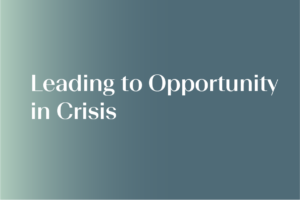At the heart of any successful comeback is resilience. This article explores the concept of resilience within the context of leadership and how it can be leveraged to transform setbacks into springboards for both personal and organizational growth.
Setbacks are instrumental and inevitable but not simply indicators of failure. They provide valuable insights into areas that need attention and improvement, offering opportunities for growth and development. Acknowledging setbacks as part of the professional journey allows individuals to detach from their emotional weight and approach them with a constructive mindset.
The ability to transform setbacks into comebacks is a hallmark of resilience and adaptability. For leaders, resilience is not just a valuable trait; it’s an imperative. After all, without setbacks, there would be no comebacks, which are always generative and should be seen as valuable contributors.
Embrace a Growth Mindset
There is no stronger foundation for a powerful comeback than having a growth mindset. Believing in the ability to develop skills through dedication and hard work enhances success likelihood. Embracing this perspective allows for a more optimistic outlook on setbacks, turning them from obstacles to lessons.
Plan, but Be Willing to Pivot
In times of uncertainty, a well-crafted plan acts as a compass that should be flexible. As essential as planning is, it’s crucial to be prepared to adapt. Advocating for a “push, push, pause” approach emphasizes not being blindly goal-oriented but ready to recalibrate in response to changing circumstances.
Practice Vulnerability
Vulnerability involves acknowledging one’s limitations and emotional states, which creates fertile ground for growth and adaptability. When leaders show their fallibility, they pave the way for better solutions and opportunities, fostering trust and loyalty among their teams.
Be Open to Failure
Perfection is the antithesis of innovation. Pursuing excellence, a more dynamic and continuous goal, involves being open to failure and continuously striving for better, turning setbacks into comebacks.
Refine Your Decision-Making Skills
Enhancing decision-making skills is critical for making strong comebacks. Leaders who frequently overcome challenges become better at analyzing past decisions and learning from them, thereby improving their strategic planning and responsiveness.
Leverage Your Network and Lead by Example
Strong leaders build strong networks to draw on for external perspectives and support when facing setbacks. This network is a valuable resource when planning comebacks and building resilience proactively.
Cultivate Patience
Since comebacks are seldom immediate, resilience demands patience. Rushed decisions can harm long-term success, while patience allows for deliberate and informed choices that sustain momentum even in adversity.
Don’t Dwell on the Disappointment
While it’s constructive to acknowledge disappointment to catalog its impacts, dwelling on it can lead to impaired decision-making. Leaders need to maintain objectivity to evaluate new opportunities effectively.
In the fast-paced world of business, setbacks are not signs of defeat nor detours on the road to success. By adopting the right mindset and strategies, leaders can turn setbacks into powerful comebacks, emerging stronger, wiser, and more capable than ever before.






